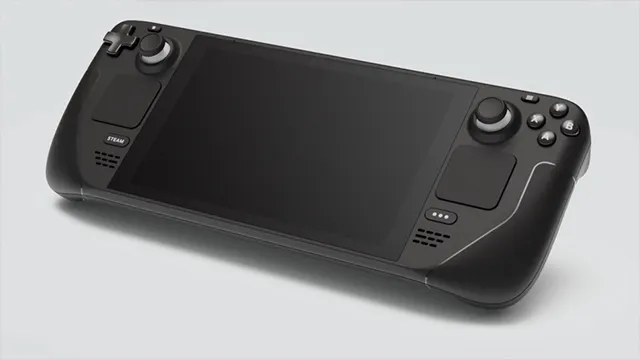Valve has been known as a game developer and owner of the popular PC storefront, Steam, and now it is venturing into the mobile PC market as well. The company announced the Steam Deck, a portable Nintendo Switch-like PC that runs the user’s current Steam account and library. There are three different models that are all slated to start shipping in December 2021. Reservations open on July 16 at 10 a.m. PT.
The three models all come with a storage case and have the same internals, except for the internal storage where size and speed increase with the price. The $399 model will have 64 GB of eMMC internal storage, the $529 one will have 256 GB of NVMe SSD internal storage, and the $649 Steam Deck will have 512 GB of NVMe SSD internal storage along with some anti-glare glass. The two more expensive ones appear to have the same drives, but Valve insisted that read and write speeds will increase, and even called the most expensive model the “fastest” one.
MORE: Nickelodeon All-Star Brawl Announced, Draws Comparisons to Smash Bros.
Users can’t upgrade the internal storage, but can add to it with an expandable memory card slot. Valve has partnered with AMD to make a custom APU that is “optimized for handheld gaming.” Its two-teraflop hardware has a Zen 2 and RDNA 2 architecture that allows for ray tracing and running relatively modern games at decent settings. IGN, in its exclusive hands-on time with the hardware, was able to play Control, Doom Eternal, and Death Stranding on medium to high settings.
The seven-inch touchscreen supports 720p and the battery will last anywhere from two the eight hours depending on what settings are used and what games are being played. Valve said Portal 2 would take four hours at 60 frames per second (which is the max the display can support) to kill a full charge, but playing at 30 frames per second would yield five or six hours. Users can also use the trackpads on the left and right side as a cursor, which might help with more mouse-oriented games. There are even multiple ways to customize the screen and add new buttons to the screen or allow for taps on the screen to imitate a click from the mouse.
There are also gyroscopic controls that allow tilt aiming, much like some games on the Switch. In addition to the standard button, bumper, and trigger layout, it also has four back buttons like some pro controllers out there.
MORE: Netflix Is Reportedly Adding Video Games to Its Service
Valve likened this more to a PC than a handheld as it has many of the open-ended luxuries of computers. Users can not only plug it in via the USB-C dock (that also has an HDMI port) and use it like a desktop computer to browse the web or do whatever else, but they can also install other operating systems, mods outside of Steam Workshop, and even games from the Epic Games Store. It is a Linux-based system, after all. It’s also compatible Bluetooth accessories or fight sticks. The handheld itself only has USB-C ports for these accessories, but the dock has standard USB ports that should fit more types of accessories.
Since it is based in Steam, it does support cloud saves. Players can even take advantage of the quick resume feature and can put any game to sleep and pick it back up whenever. Valve even said it was working on a way to seamlessly go from desktop to Deck without having to quit out, but hasn’t gotten there yet.
Gabe Newell, Valve co-founder, told IGN that he wanted to “contribute to the health and vitality” of the PC ecosystem with the Steam Deck. He also emphasized the importance of price, saying that getting to the prices was “painful” but also “critical” to in the mobile space, implying that a high price would have doomed it.










